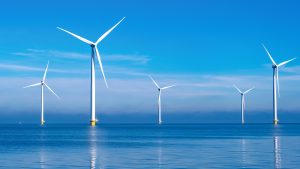This week, Japan issued the first-ever sovereign climate transition bond. The proceeds will catalyze public-private investments of 120 trillion yen ($803 billion) to implement the Green Transformation (GX), Japan’s landmark policy for reaching carbon neutrality.
Clean energy advocates have rightly criticized the GX for promoting technologies like coal ammonia co-firing and carbon capture and storage, which are still largely unproven at a commercial scale and ineffective at curbing carbon pollution.
But the Climate Transition Bond mostly avoids these technologies. Instead, the government plans to use bond proceeds on technologies that will steer Japan’s government and industry on the right track in terms of climate and export competitiveness.
Compared to the post-industrial West, Japan prides itself on exporting manufactured goods like motor vehicles, machinery, and electronic equipment. This means that cutting emissions from the industrial sector is paramount.
A large chunk of the Climate Transition Bond’s proceeds will be spent on precisely this. According to Nikkei, 254 billion yen will go toward the research and development of hydrogen-powered blast furnaces for steel-making, and 32.5 billion yen toward reducing emissions from industrial furnaces.
The transition bond will also aid the development of next-generation renewables like perovskite solar cells and floating offshore wind. Installing solar and wind farms is increasingly contentious in Japanese prefectures, as residents worry about the ecological impact of these projects’ land use. Flexible perovskite cells, on the other hand, hold the potential to be used on surfaces like bridges and building facades, avoiding the need to devote large areas of land to solar farms. Floating offshore wind is by far the biggest opportunity to scale up clean energy in Japan, whose exclusive economic zone is 10 times the area of its land mass. To complement these renewables, the government is also committing to support battery manufacturing and supply chains.
Technologies for energy efficiency are also among the government’s top investment priorities. As the use of artificial intelligence grows globally, data processing and storage eat up tremendous amounts of electricity. As the International Energy Agency has warned, increasing energy efficiency will be critical as data center workloads and internet traffic expand. Japan’s Climate Transition Bond addresses this concern by allocating a large portion of the proceeds to developing next-generation semiconductors that would radically reduce power consumption in data centers.
Contributing toward Japan’s emission reduction goals isn’t the only thing these technologies will do. Japanese firms also have a real opportunity to lead the world in developing and exporting them. So far, Japan has sorely lagged behind other countries in manufacturing some key clean energy technologies, but this hasn’t stopped its policymakers from looking for sectors in which to become the top exporters. Yes, China, the United States, and Europe all produce perovskite solar cells, and next-generation chips. But the pecking orders for these goods aren’t yet established, unlike for conventional solar and EVs. Japan has a shot at becoming a powerhouse in those emerging technologies, and the Climate Transition Bond can help.

































